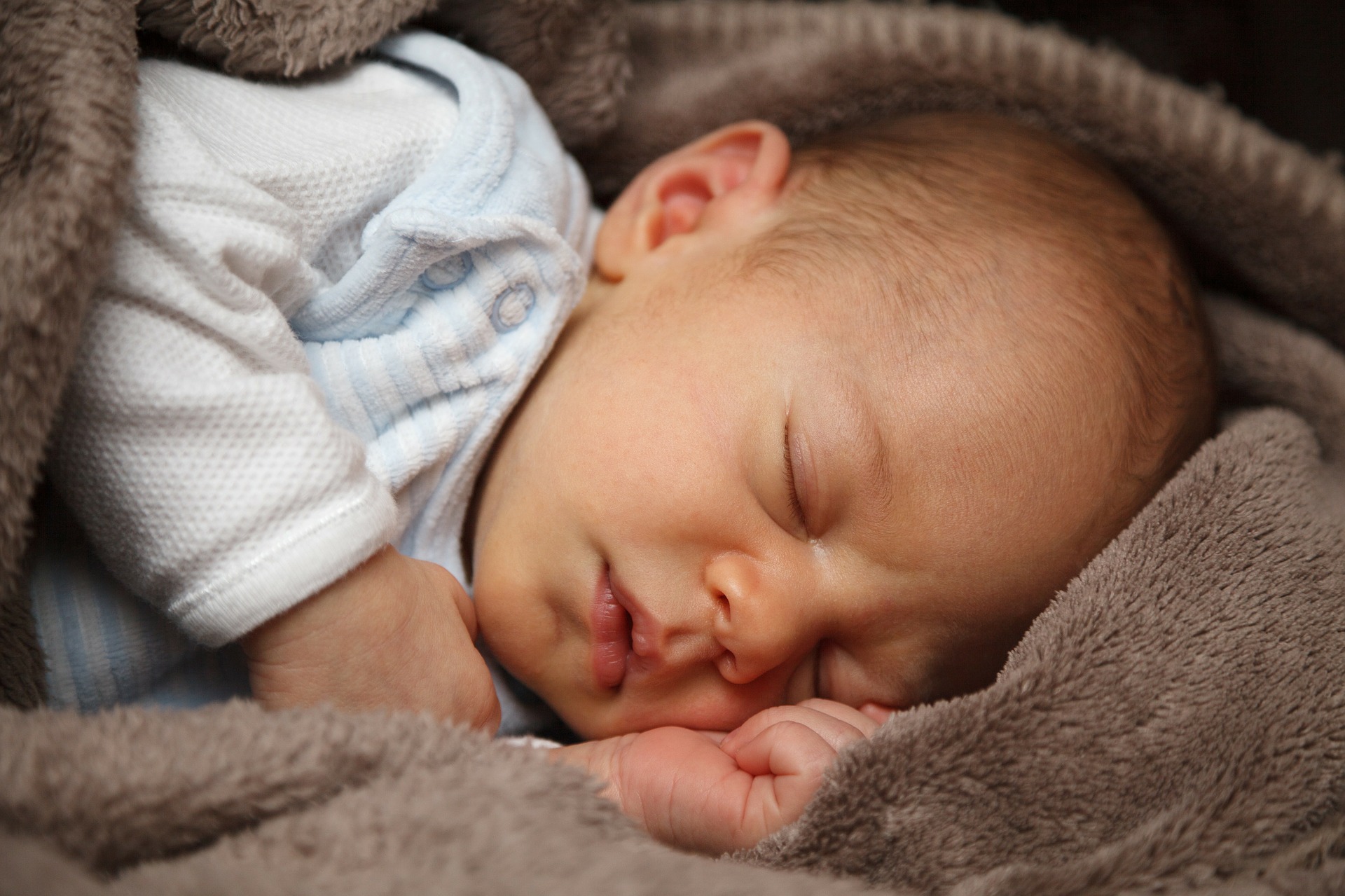Ultimate Guide on Sleep Options for Baby
 If you are a new mom or mom-to-be and are looking for a guide on sleep options for baby, you’ve landed in the right place.
If you are a new mom or mom-to-be and are looking for a guide on sleep options for baby, you’ve landed in the right place.
Fortunately there are many sleep options available for you to choose from. There is no right or wrong decision, and it is entirely up to you to decide what works best for your family.
There are, of course, some safety guidelines, we recommend you read thoroughly to promote a healthy and safe sleep environment for your baby.
Your decision will be guided by different criteria, such as safety, convenience and space available. Is baby going to sleep in your bedroom or in a separate room? These are a few points to consider.
There are pros and cons to every option, and it is entirely up to you to pick the one that works best for your family. For some families this is a trial and error process. Whereas for others it is more straight forward.
You can trial as many of these options, as you need to, and that’s ok as your needs may change over time.
[thrive_text_block color=”light” headline=”Looking for Bath options for your baby?”] [one_half_first]Check out our Top Guide on Best Baby Bath Tubs to find the one that is right for your baby[/one_half_first][one_half_last]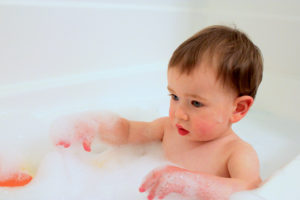
Sleep options for Baby
Bassinet
A bassinet is a small crib, which is suitable for newborn until your baby is approximately 3 to 6 months old (depending on the model). Bassinets come in different sizes, designs, shapes and materials.
Some examples of bassinets:
Mesh Bassinets
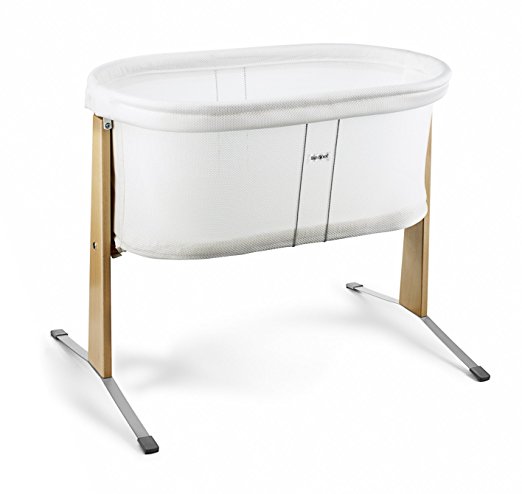 The mesh is a see-through material (almost transparent), which will allow you to watch your baby anytime. The material is also soft and breathable, which makes it a safe option for newborns.
The mesh is a see-through material (almost transparent), which will allow you to watch your baby anytime. The material is also soft and breathable, which makes it a safe option for newborns.
Traditional Moses
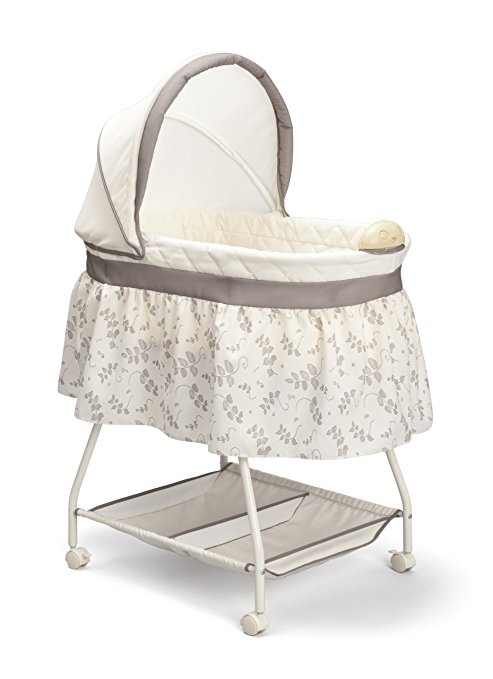 This option is a classic choice for many parents. Some designs offer wheels and a removable canopy, even soothing music for baby.
This option is a classic choice for many parents. Some designs offer wheels and a removable canopy, even soothing music for baby.
Moses Basket
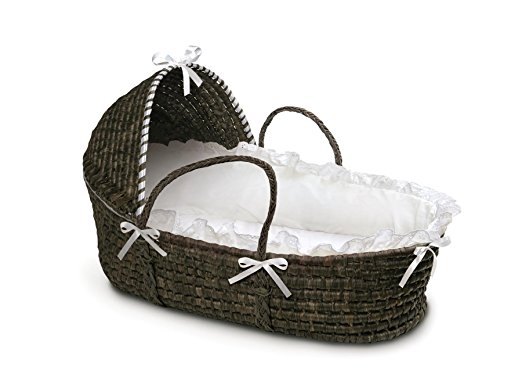 The moses basket normally features a flat base, which will give you the flexibility to take it anywhere around the house. In addition you can take it over to relavies’ or friends’ houses easily as it is light. Note that it is not recommended to lift the moses when your baby is inside for extra safety.
The moses basket normally features a flat base, which will give you the flexibility to take it anywhere around the house. In addition you can take it over to relavies’ or friends’ houses easily as it is light. Note that it is not recommended to lift the moses when your baby is inside for extra safety.
Pros of bassinets
✓Due to their size they can be placed in your bedroom much easier than a crib or larger cot
✓They are portable and can be moved around the house easily due to their small size
✓Bassinets are usually lighter in weight than cots
✓You can place the bassinet close to you, which is practical for breastfeeding moms
✓Baby is more contained and snug, due to its size
Cons of bassinets
✕Limited time use: It can only be used for a limited time as your baby will outgrow it after approx. 6 months of age
✕Limited moving space: as your baby grows you will find that he or she may start touching the edges of the bassinet
✕Weight restrictions: check the manufacturer information before buying a bassinet. Some of them have low weight restrictions (approx. 15 Lbs or 6 kg).
Bassinet added features
Nowadays there are several added features to bassinets. Some of them include musical toys, rocking movement or vibrations to help settle your baby.
Some bassinets have the option to be detached from its base, for greater mobility. Others offer wheels with breaks, which makes it easier to move baby around the house.
Cot/ Cradle or Crib
A baby cot, crib or cradle is a bed for infants or very young children. It will showcase bars or some other security feature to ensure that baby is well contained and cannot fall out.
According to experts, once children start climbing out of their cribs, it is a sign that they are ready for a toddler bed. This may happen at around the 2 years of age.
Like bassinets, baby cots come in different sizes, shapes and materials, giving parents plenty of options to choose from.
Timber Cot
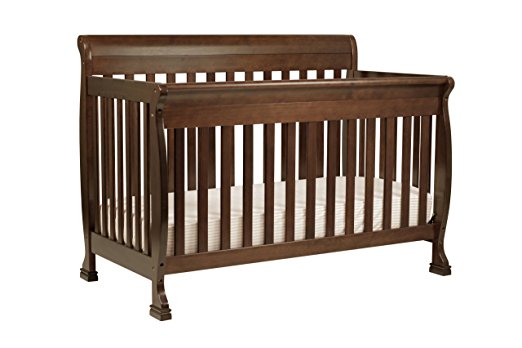 The timber cot is a classic option and the choice of many parents. Timber cots are versatile, may come in different colors, plus depending on the model they can convert in toddler bed later on.
The timber cot is a classic option and the choice of many parents. Timber cots are versatile, may come in different colors, plus depending on the model they can convert in toddler bed later on.
On the downside, they may be heavier and bulkier than other sleep options. Nonetheless, it will bring an elegant touch to your nursery; especially with matching changing table and / or set of drawers.
Iron cot
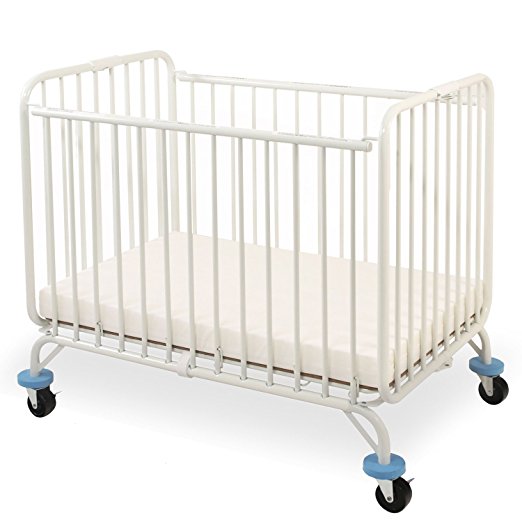 If you prefer a minimalist style, the iron cot can be an option to consider. An iron cot will take less space than a timber cot and will also be lighter in weight.
If you prefer a minimalist style, the iron cot can be an option to consider. An iron cot will take less space than a timber cot and will also be lighter in weight.
Some models may include wheels, which will make it easy to move it around the room as need be.
[thrive_text_block color=”light” headline=”How to choose the best cot mattress for your baby?”] [one_half_first]Check out our guide here, where we review different mattress options.[/one_half_first][one_half_last]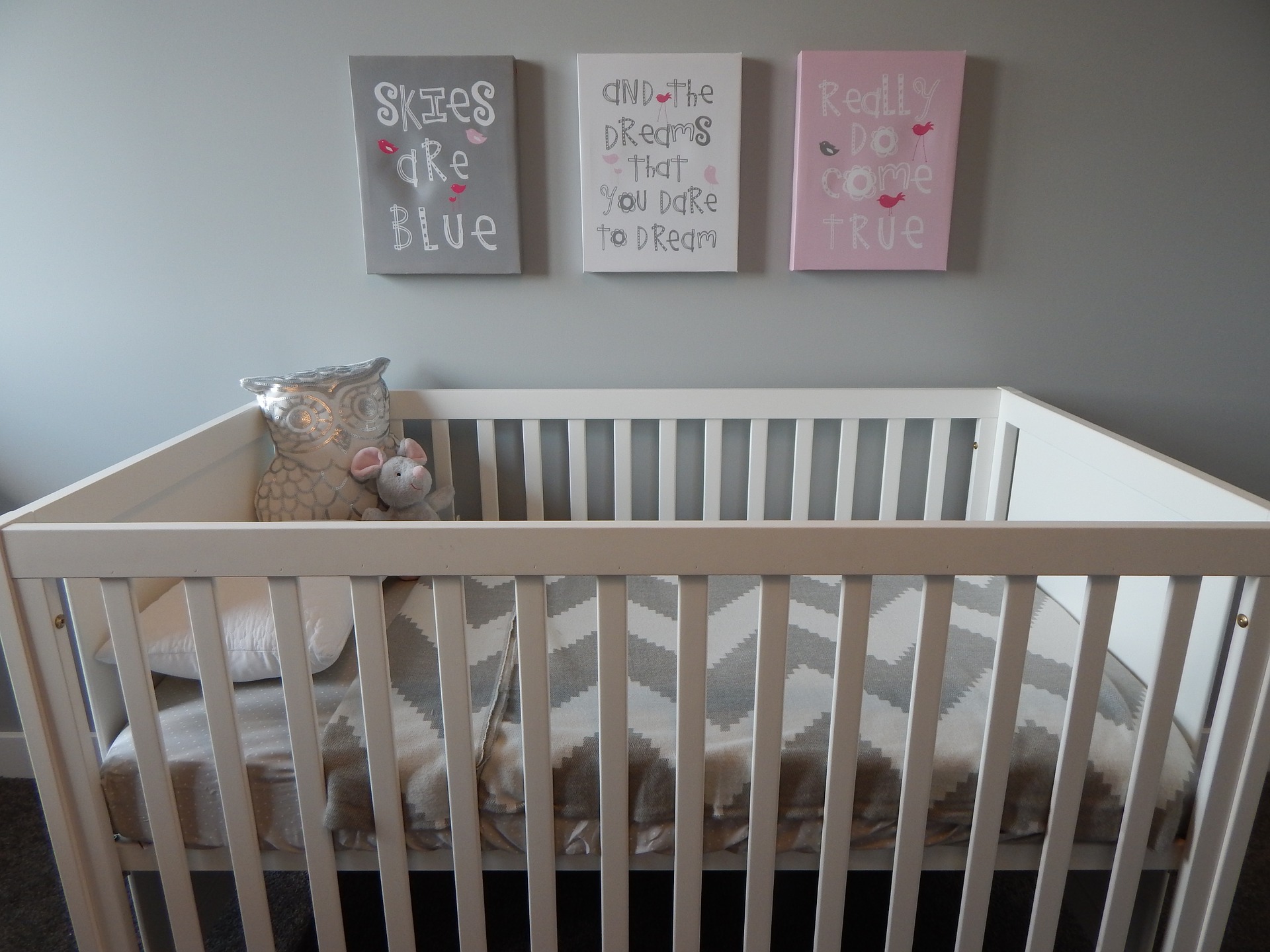 [/one_half_last]
[/thrive_text_block]
[/one_half_last]
[/thrive_text_block]
Portable cot or Travel cot
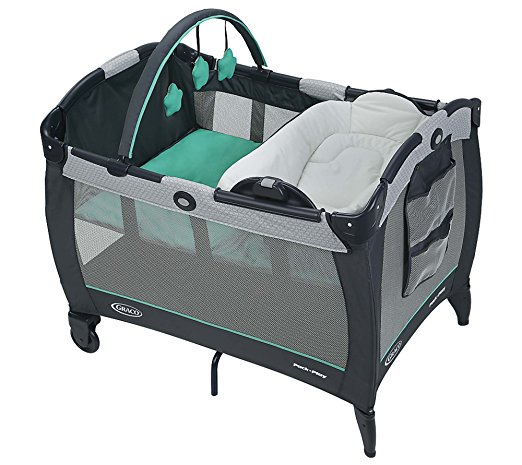 In terms of weight this is the lighter option of them all. Portable cots are easy to assemble and dissemble and are generally the go-to choice for families on the go.
In terms of weight this is the lighter option of them all. Portable cots are easy to assemble and dissemble and are generally the go-to choice for families on the go.
Once assembled, however, a portable cot may not pass through the door. You may need to bear that in mind, as they are larger than bassinets.
Most portable cots will include sides made of mesh (that look like a net), which are breathable and multiple levels for you to place your child.
Pros of cots
✓They offer different levels to place baby
✓Longer term sleeping place vs. bassinets
✓The cot can convert to a toddler bed later on (depending on the model)
Cons of cots
✕They take more space than bassinets
✕They are heavier than bassinets
✕Changing sheets can be more laborious and time consuming
Key features
There are some basic features to look for when sourcing a crib for your baby.
Size
Baby cots come in different sizes. Before you choose the one for your baby, make sure it fits where you need. Whether that space is in your own room or in your baby’s new room, make sure that you have enough space to place it by taking measurements.
Selecting a Mattress
Mattress selection is of utmost importance for cots. This is to ensure a safe environment for your baby to sleep.
The mattress ought to be firm but not too hard. There should be no gaps between the mattress and the edges of the cot, to prevent your baby from falling or getting stuck.
[thrive_text_block color=”light” headline=”What are the best cot mattresses?”] [one_half_first]Click there to go through our product reviews on top baby mattresses, brands and features.[/one_half_first][one_half_last]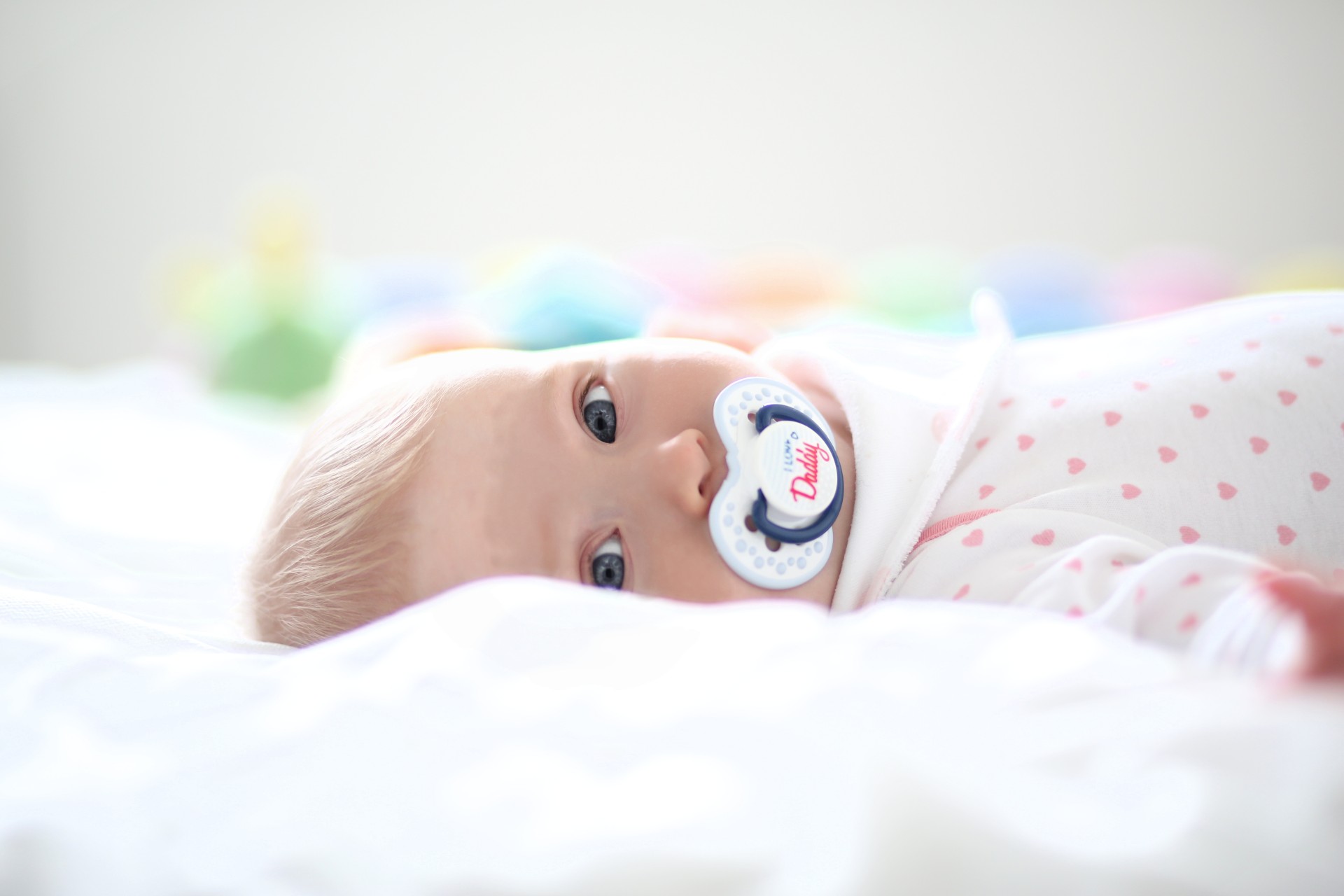 [/one_half_last][/thrive_text_block]
[/one_half_last][/thrive_text_block]
Multiple levels
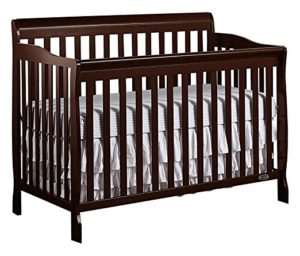 This is quite a common feature, but make sure your baby’s cot offers different height levels.
This is quite a common feature, but make sure your baby’s cot offers different height levels.
You will use the higher level when your baby is little and cannot sit up or stand up. This position is ideal to use from newborn to 6/ 7 months, or up until the time your child starts showing signs that he / she can move using the bars of the cot.
Having this higher level means you will not have to bend down to place your baby to sleep, which is better for your back in the long run.
Once baby has more mobility, it is recommended to lower the level of the base and mattress. Small babies, with little neck and head control could go overboard while standing up grabbing the side of the cot.
Lowering the level of the base will guarantee that the end of the bar is high above baby’s head, which is a much safer option.
A note on drop-down sides on cots
The drop-down side is designed to help you place your baby in the cot without bending down too much. The side can be lowered for you to place your baby in the cot and then it can go back up.
In the US cribs that feature a drop-down side have been banned. The reason is that they were not considered a safe option for babies to sleep.
There have been cases in which the drop side comes loose due to use, assembly or timber quality and babies this creates a risk for babies to get trapped between the mattress and the bars of the cot. This can ultimately cause suffocation.
Such regulation does not apply to other countries yet, such as Australia. Although some parents are calling out for them to be banned.
Co-Sleeping
 No baby sleep guide is complete without going over co-sleeping with your baby.
No baby sleep guide is complete without going over co-sleeping with your baby.
Co-sleeping is called when your baby sleeps on the same surface with one or two parents.
Even though co-sleeping is not broadly recommended by health care professionals, there are many suggestions to make co-sleeping safer.
The Risks of co-sleeping with your baby
SIDS and SUDI risks
According to experts, co-sleeping increases the risk of Sudden Infant Death Syndrome (SIDS) and Sudden Unexpected Death in Infancy (SUDI).
The risks of SIDS and SUDI are increased where:
- Either parent is a smoker
- Either parent uses drugs that induce sleep
- There is alcohol intake before bed, as it increases sleepiness
- Risk is higher for infants under 3 months or born premature
Knowing there are so many risks to co-sleeping, why do we still do it? There are a few reasons
Reasons for co-sleeping with your baby
- Bonding with the new baby. It is actually very comforting to sleep with your newborn in bed
- To make baby feel safe and protected
- It is practical for breastfeeding moms to sleep with their babies next to them, as they can breastfeed while lying down and reduces sleep deprivation
- In some cultures the custom is that families sleep on the same bed
What are the safety measures to take if you wish to co-sleep with your baby?
Even though it is not recommended by experts to co-sleep with your baby, there are some things you can do to minimize the risks of SIDS or SUDI:
- Always put your baby to sleep on its back
- Avoid putting your baby to sleep on its tummy or side
- Make sure the mattress on your bed is firm
- Do not swaddle your baby if you are co-sleeping
- Place baby over your blankets not under them
- Protect your baby from suffocation hazards
- Do not place baby between partners, but better next to one parent
- Do not place baby too close to a wall
- Avoid placing baby against a pillow
Pros of co-sleeping
✓You can react to its cry easily, as they are literally next to you
✓It is easy for either parent to check on the baby (the recommendation is that baby should sleep on one parent’s side, not in the middle of both)
✓Co-sleeping promotes bonding and can help you reduce sleep deprivation
Cons of co-sleeping
✕Higher risk of SUDI and SIDS vs. baby sleeping in its own cot or bassinet
✕Your sleep may be disrupted due to baby movements in your same bed
✕The transition to a separate room may be harder if you co-sleep in the long run
Are there any sleep options that promote co-sleeping safely?
Introducing co-sleepers
What are Co-sleepers?
There are 2 other bed options that promote co-sleeping with baby. These products are broadly available and the choice of many parents.
Co-sleeper bassinet
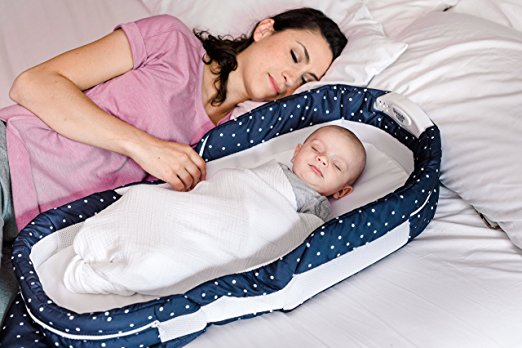 The co-sleeper bassinet consists of a small bassinet that you can place on your mattress. It does not have a base or canopy.
The co-sleeper bassinet consists of a small bassinet that you can place on your mattress. It does not have a base or canopy.
The sides sit lower than conventional bassinets as this will let you watch your baby while you are lying next to him. The sides may be soft or firm, depending on the co-sleeper material, but they create a barrier to prevent you or your partner from rolling over your baby while you are sleeping.
Because baby is contained in the bassinet, they are thought to be a safer option for co-sleeping than placing your baby to sleep on your bed.
Although there is not much research on co-sleeper bassinets, there is one for us to mention in this feature.
 In the Maori culture the Wahakura is a traditional bed used for newborns. This baby bed consists of a flax moses basket that resembles the co-sleeper bassinets.
In the Maori culture the Wahakura is a traditional bed used for newborns. This baby bed consists of a flax moses basket that resembles the co-sleeper bassinets.
The study compared the safety of the traditional Wahakura vs. the conventional bassinet, and it covered infants from newborn to 6 months among 200 randomly selected Maori families.
The conclusion of the study was that there were no significant differences in terms of infant risk between the Wahakura and the traditional bassinet. There was, however, an increase in continuous breastfeeding when the Wahakura was in use.
Overall the study suggests that Wahakuras are relatively safe and can be promoted as an alternative or co-sleeping.
Co-sleeper cot “next to you”
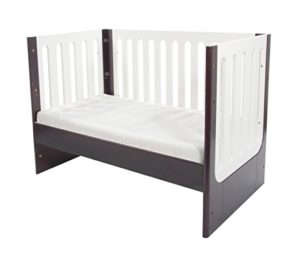 This option consists of a bassinet or cot that can be attached to the side of your bed by removing one of its sides. The height of the cot can be adjusted to ensure you are your baby are sleeping at a similar level.
This option consists of a bassinet or cot that can be attached to the side of your bed by removing one of its sides. The height of the cot can be adjusted to ensure you are your baby are sleeping at a similar level.
Even though this option is called co-sleeper, the name could be challenged as baby is sleeping on a different surface, not on your bed. Nonetheless, baby will still be sleeping next to you and within arms reach.
There is no research available to back up this option as safer than a bassinet or a co-sleeper bassinet, as commented above.
Pros of co-sleepers
✓Co-sleepers are an alternative for parents who enjoy co-sleeping with baby
✓Baby is contained in its own bed (in our outside of yours), so there is lower risk of falling or suffocation
✓Baby is within reach for mom to breastfeed during the night
✓Co-sleeping promotes breastfeeding
✓Co-sleeping promotes good rest for mom, as you will have baby within reach
Cons of co-sleepers
✕There is no research conducted that proves co-sleepers minimize the risks of SIDS and SUDI
✕Transition to a big cot later on may be harder if baby gets too used to sleeping next to you
Overall, the decision of where your baby sleeps is entirely up to you and your family. We recommend you thoroughly read the SIDS and SUDI guidelines before making a decision.
Will baby sleep in your same room?
This sounds like an easy question with obvious answer, but for many families it is a reason for debate. We will expand on this topic excluding co-sleeping families, as the question has been answered for them.
Room-sharing with your baby
 Room-sharing is called when baby sleeps in your same room (not in your same bed).
Room-sharing is called when baby sleeps in your same room (not in your same bed).
This is the option recommended by experts, up until baby is 6 to 12 months of age as it reduces the risks of SUDI and SIDS.
We will go over the pros and cons of room-sharing
Pros of Room-sharing
✓Baby is within reach. That means that you can attend to his/ her cry easier and faster than if baby was sleeping in another room. You have more chances to hear your baby cry if he is in your same room, which makes improves speed in which you can provide comfort.
✓Great option for breastfeeding moms, as baby is close by. If you are breastfeeding 2 to 4 times during the night, having your baby near you can make a big difference. If you can attend your baby fast, that means less disturbance for your sleeping partner as well.
✓Some parents sleep better with their baby in the room, as they can monitor them closely. Especially during the first few weeks and knowing the existing risks of SUDI and SIDs, some parents prefer to keep an eye on their baby at any opportunity.
✓You can hear the noises your baby makes, which is a reassurance he/ she is doing alright through the night. In addition, if you are under sleep deprivation it may be better to sleep with baby close to you, in case you don’t hear them when they cry.
Cons of Room-Sharing
There are some advantages that turn themselves into disadvantages, and that will depend on the you, the parent, and what your preferences are.
 ✕You can hear the noises your baby makes: if you are in alert mode (like me when I had my first child) you will hear every single little sound coming from that mouth. The problem associated to this is that you will get little to non-sleep, which is no good if you need to look after a newborn. It was not until I moved the little bassinet to outside of my room that I could get some sleep. Baby was close enough for me to hear her cry, but not as close as to hear every little sound.
✕You can hear the noises your baby makes: if you are in alert mode (like me when I had my first child) you will hear every single little sound coming from that mouth. The problem associated to this is that you will get little to non-sleep, which is no good if you need to look after a newborn. It was not until I moved the little bassinet to outside of my room that I could get some sleep. Baby was close enough for me to hear her cry, but not as close as to hear every little sound.
✕How about your partner? If your partner has to go to work on the next day and your baby is unsettled it may be hard to share rooms in the long run. This may be another reason to re-think sleep arrangements around the house (at least for the first few months)
✕Baby may get too used to sleeping close to mom and dad, which may make the transition to another room harder. For some parents, the longer they delay the transition to baby’s own room, the harder it gets in the future. It is no impossible though, as you wouldn’t see many teenagers sleeping with their parents. The transition may take longer and may be harder for either baby or mom, or both! But it is part of growing up.
Baby sleeping in his/her own room
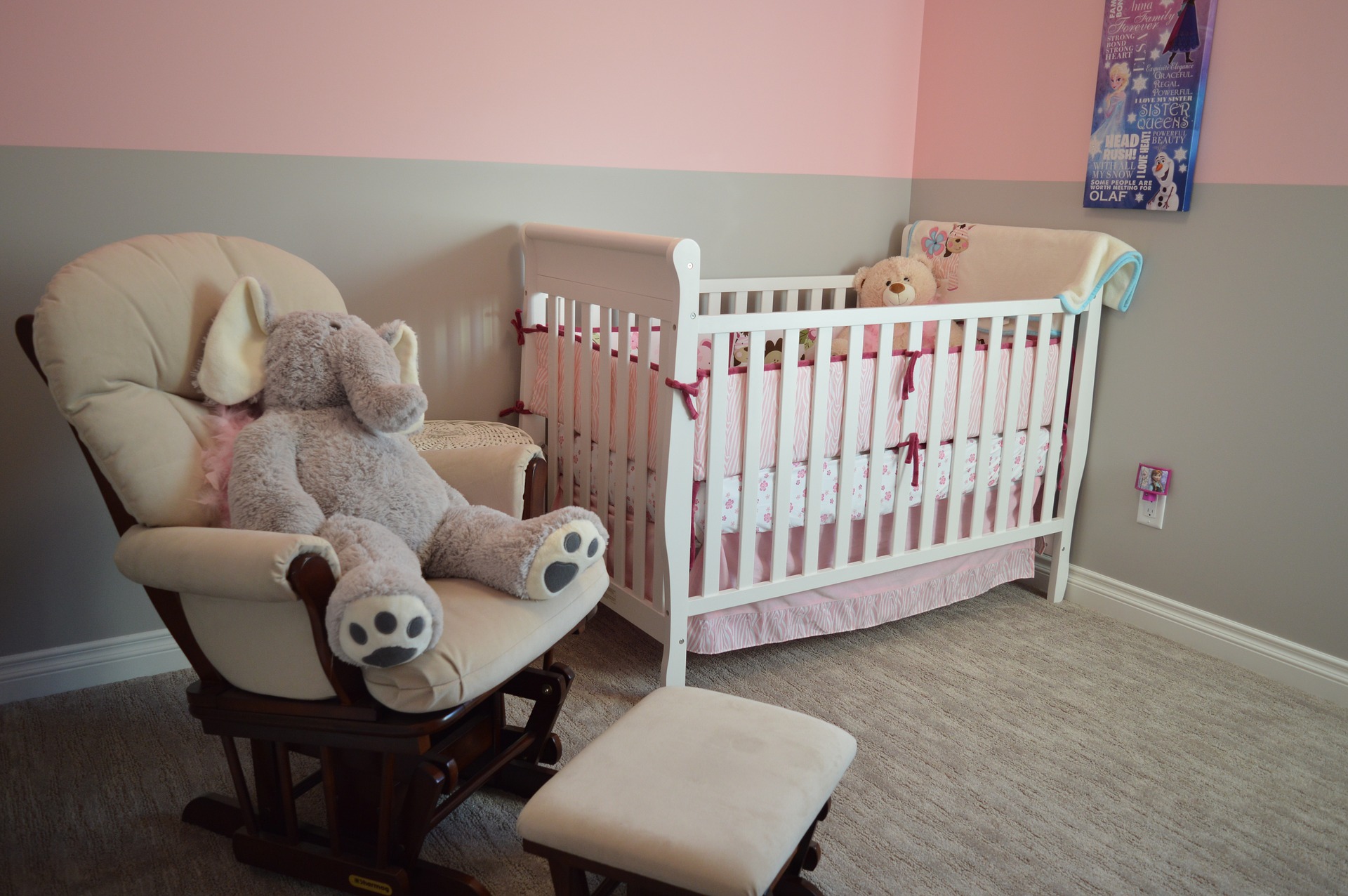 As mentioned in previous sections, most parents of newborns prefer to sleep with them close by. Paediatricians recommend that baby sleep in your same room until they are approx. 6 to 12 months of age.
As mentioned in previous sections, most parents of newborns prefer to sleep with them close by. Paediatricians recommend that baby sleep in your same room until they are approx. 6 to 12 months of age.
Nonetheless, every family is different and sleeping arrangements may vary from one family to the other.
Pros of baby sleeping in separate room
✓Minimal disturbance to your partner. If baby is sleeping in his/ her own room, you can attend their needs in one place. You can turn on a night light, change nappies, breastfeed in a comfortable nursing chair.
When baby goes back to sleep you can go back to your room, without disturbing your partner. This is important if they are the financial support for the family whilst you are looking after the newborn. You can use a baby monitor, with or without camera to make sure you hear when your baby needs you.
✓After baby is born the dynamic will change (especially if this is your first baby). Having a space you can share with your partner will become more and more valuable to have some intimacy.
✓Baby will get used to sleeping in his or her own room from the start. That means that in the long run you will not need to go through a transition stage. Some children don’t notice the separation, however, for others it is harder, which in turn makes it harder for mom and dad, too.
Cons of baby sleeping in separate room
✕Under sleep deprivation, it gets harder to get out of bed. The fact that you should get up and go to other room altogether, may make you feel more tired, especially if you are breastfeeding.
✕There are chances you may not hear when your baby is crying. This is again caused by the lack of sleep during the first few months. Consider a baby monitor, if you would rather your baby sleep in a separate room.
✕If you have other children sharing room with the new baby, his/ her cries may wake them up during the night. In addition, you may not be able to attend to your baby in the room, you may need to go somewhere else, like the living or dining room to change nappies, feed and settle your baby back to sleep.
Conclusion
We have covered the basic configurations; however, they are by no means the only ones. There are so many sleep arrangements you can make and the best way to find the right one for you is to trial different options.
It is important to note, that even though your baby will be your TOP priority, he/ she will need a well-rested parent to be looked after properly.
Consider that you will need to look after yourself before you can look after your baby, and that includes meeting some basic needs: food, sleep and hygiene.
Whatever sleep option you choose, your family will find the right balance so that it works for everyone. Once again, don’t be afraid to try different sleep options and pick the one that works best for you.
Was this feature helpful? Have you tried any of these sleep options? Leave us your thoughts!
What has worked for you and your family?

